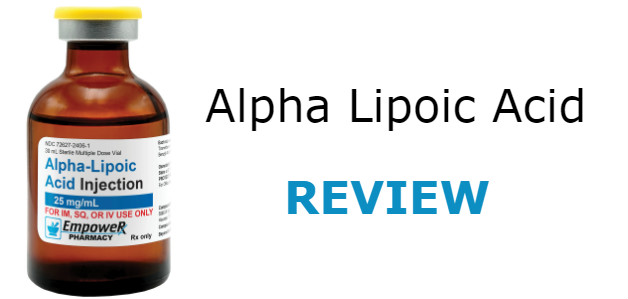Table of Contents
Alpha Lipoic Acid Supplement Overview
Alpha-lipoic acid (ALA) directly activates lipid, tyrosine and serine/threonine kinases of the insulin signaling pathway in both muscle and fat cells, which leads to the stimulation of glucose uptake. Unique among all agents currently used to lower blood sugar in animals and humans with diabetes.
ALA and Diabetes
In-vivo studies with humans shows that there may be a limit to the effectiveness of large oral doses. The effects of a 4-week oral treatment with alpha-lipoic acid, evaluated in a placebo-controlled, multicenter pilot study. Seventy-four patients with type-2 diabetes, randomized to either placebo; or active treatment in various doses of 600 mg once daily, twice daily (1200 mg), or thrice daily (1800 mg) alpha-lipoic acid. When compared to placebo, significantly more subjects had an increase in
Glucose Uptake
insulin-stimulated glucose disposal (MCR) after ALA treatment in each group. The average increase in glucose disposal was 27%. Interestingly, no dose effect seen in the three different alpha-lipoic acid groups. In this study taking more than 600 mg did not increase the effects on glucose uptake. This may be a result of poor absorption or a real dose response curve that is relatively level.
Antioxidant
ALA, not just known to stimulate glucose uptake, probably more famous as a powerful antioxidant. ALA is a potent antioxidant in both fat- and water-soluble environments. Furthermore, its antioxidant activity extends to both the oxidized form and its reduced form. DHLA is capable of regenerating ascorbic acid from dehydroascorbic acid, directly regenerating vitamin C and indirectly regenerating vitamin E. Researchers have found a-lipoic acid to increase intracellular glutathione and coenzyme Q10 levels.
More Studies Need Done
a-Lipoic acid appears capable of chelating certain metals. It forms stable complexes with copper, manganese and zinc. In animal studies, it has been found to protect from arsenic poisoning; and, in both animal and in vitro studies, has been found to reduce cadmium-induced hepatotoxicity.In vitro, it was found to chelate mercury from renal slices.
Lipoic acid also shown to increase respiration rates of mitochondria, principally through antioxidative mechanisms. Although not entirely clear, ALA may also increase the functioning of the insulin-signaling pathway by reducing radicals that interfere with the pathways intermediates.

